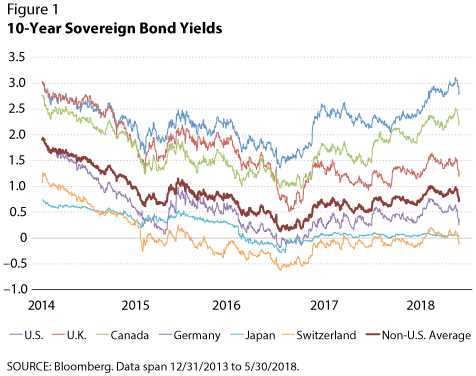Treasury Yield Factors
- Economic Conditions: The state of the economy plays a significant role in determining treasury yields. When the economy is strong and growing, investors may demand higher yields to compensate for the potential inflationary pressures. Conversely, during economic downturns, investors may seek the safety of treasury bonds, leading to lower yields.
- Inflation Expectations: Inflation erodes the purchasing power of fixed income investments. Therefore, investors closely monitor inflation expectations to assess the potential impact on treasury yields. Higher inflation expectations can lead to higher yields, as investors demand compensation for the eroding value of their investments.
- Supply and Demand: The supply and demand dynamics in the treasury market can also influence yields. When there is a high demand for treasury bonds, yields tend to decrease. Conversely, when there is a low demand or an oversupply of treasury bonds, yields may increase.
- Global Factors: Treasury yields can be affected by global economic and geopolitical events. For example, during times of uncertainty or market volatility, investors may seek the safety of US treasury bonds, leading to lower yields. Additionally, changes in foreign exchange rates can impact the attractiveness of US treasury bonds for international investors.
These are just a few of the key factors that can impact treasury yields. It is important for investors and financial professionals to closely monitor these factors and their potential implications for fixed income investments.
Factors Affecting Treasury Yields

- Economic Indicators: Economic indicators such as GDP growth, inflation rates, and employment data can have a significant impact on Treasury yields. Positive economic indicators often lead to higher yields as investors anticipate higher interest rates and increased borrowing costs.
- Monetary Policy: The actions of central banks, particularly the Federal Reserve in the United States, play a crucial role in determining Treasury yields. When central banks raise interest rates, Treasury yields tend to increase as well.
- Market Sentiment: Investor sentiment and market expectations can influence Treasury yields. During times of economic uncertainty or market volatility, investors tend to seek the safety of government bonds, leading to lower yields. Conversely, when investors are optimistic about the economy, yields may rise as demand for government bonds decreases.
- Supply and Demand: The supply and demand dynamics of Treasury bonds directly impact their yields. If there is high demand for government bonds, yields may decrease as investors are willing to accept lower returns. Conversely, if there is a lack of demand, yields may rise to attract investors.
- Global Factors: Global events and geopolitical developments can also affect Treasury yields. Factors such as trade tensions, political instability, and changes in foreign exchange rates can impact investor confidence and influence the demand for government bonds.
Impact of Treasury Yields on Fixed Income Investments
1. Bond Prices
One of the primary ways Treasury yields affect fixed income investments is through their impact on bond prices. Bond prices and yields have an inverse relationship, meaning that as Treasury yields rise, bond prices fall, and vice versa. This relationship is due to the fact that new bonds issued in a higher yield environment are more attractive to investors than older bonds with lower yields. As a result, the prices of existing bonds decrease to align with the higher yields offered by new bonds.
2. Interest Income
Another significant impact of Treasury yields on fixed income investments is on the interest income received by investors. When an investor purchases a fixed income security, such as a bond, they receive regular interest payments based on the bond’s coupon rate. The coupon rate is typically fixed at the time of issuance. However, if Treasury yields increase after the bond is issued, the fixed coupon rate becomes less attractive compared to the prevailing market rates. As a result, investors may experience a decrease in their interest income.
3. Yield Spreads
Treasury yields also influence yield spreads, which are the differences in yields between Treasury securities and other fixed income investments, such as corporate bonds or municipal bonds. When Treasury yields rise, the yield spreads tend to widen, as investors demand higher compensation for taking on the additional risk associated with non-Treasury securities. Conversely, when Treasury yields fall, yield spreads tend to narrow, as investors are willing to accept lower yields for the perceived safety of Treasury securities.
4. Portfolio Diversification

Emily Bibb simplifies finance through bestselling books and articles, bridging complex concepts for everyday understanding. Engaging audiences via social media, she shares insights for financial success. Active in seminars and philanthropy, Bibb aims to create a more financially informed society, driven by her passion for empowering others.
